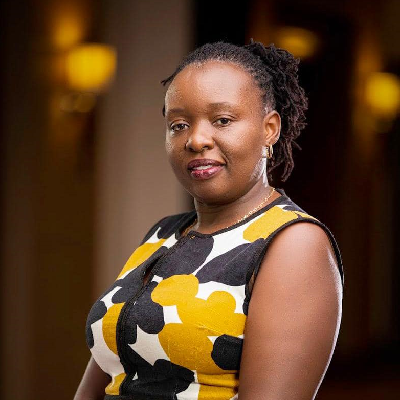
Some 40% of Uganda’s adult population is unbanked. Stanbic is determined to drive down these numbers through a number of initiatives.
Emma Mugisha, executive director and head of Business Banking at Stanbic Bank Uganda, believes that mobile money represents a huge growth market: after all, Uganda has more than 30m people using the payment method.
The pandemic has accelerated her bank’s agenda to partner with fintechs and other businesses to help them digitise the market. Stanbic has invested heavily in allowing customers to use USSD (Unstructured Supplementary Service Data) for mobile banking.
USSD is a global system for mobile communications protocol that is used to send text messages. It is a popular way to transact in many African countries, where many have phones but are without internet.
Mugisha says that USSD is a more popular digital channel in Uganda because not many Ugandans have smartphones and some prefer to use feature phones that employ the system.
As Uganda’s largest commercial bank by assets and branch network, Stanbic has played a critical role in the development of the country’s economy in recent years.
The South Africa-based Standard Bank Group established its presence in Uganda in the early nineties, but it transformed into the country’s main lender in February 2002, when it acquired 90% of the shares in Uganda Commercial Bank, a government-owned bank with 65 branches. It was renamed Stanbic Uganda Bank.
As Uganda’s economy continues to digitise, Stanbic has also moved into agency banking – where a fintech offers its customers a service, which is provided and managed by a bank that acts as the ‘agent’ of that service. Although Stanbic’s branch network is an important customer contact point, Mugisha says around 95% of her bank’s transactions are on alternative channels and out of branch.
“We find that our customers have moved more to digital channels as well as agent banking,” says Mugisha. “The agent bank is a very popular channel for our customers as well, especially for the smaller transactions, whereas the larger corporates are comfortable with internet banking.”
In Uganda, around 40% of the adult population is unbanked. Telecoms companies like MTN are helping financial services deepen on the continent and for banks like Stanbic, this presents several challenges and opportunities.
“In the past, we’ve looked at salaried customers, or formal businesses, and with Uganda being a very informal market, we lost a big percentage of a potential customer base that we could probably have served.”
But reaching individuals in the informal market can be expensive. To be able to do this economically, the bank has set up a digital wallet called FlexiPay to support its ambitions to reach the last mile.
It has also been supporting Ugandan Savings and Credit Cooperative Societies (SACCOs), which are made up of small businesses, local banks and farmer co-operatives, through the Economic Enterprise Restart Fund (EERF).
Many Ugandans ate into their savings during the pandemic, so Stanbic supported them, partnering with several development organisations and providing cheaper funding for small businesses, while taking on additional risk, according to Mugisha. She says Stanbic has supplied around $25m in loans to SACCOs and the amount is growing.
“We would like to grow that fund to as large as $100m, if we can find as many participants as possible.”
The fund is focusing on three key areas, including cheaper financing, “so that the end user is able to retain some margin in their business and grow their business”.
The second is digitisation: “Tying that up with FlexiPay for the end user, we are also supporting the SACCOs to digitise. If they don’t have an Enterprise Resource Planning system, they partner up with three fintechs that can give them software to help them manage their business. That helps us to better appraise their credit-worthiness too.”
In partnership with the International Labour Organisation (ILO) and other employment-related organisations, Stanbic also provides training on the management of SACCOs and their members.
“So far we have digitised as well as trained close to 100 SACCOs. We’re also getting partners that are willing to give us grants that will help us to do this because otherwise it can get quite expensive.
We realised that once you have a good proposal, you’re not short of partners that can come in,” she says.
Stanbic also has another initiative to help the sector, called OneFarm, which aims to reach and support farmers through off-takers (businesses that buy farming produce) or agricultural processors.
For example, the bank is working on a project with Uganda Breweries for their barley producers as well as with grain traders at the Uganda Grain Council.
In a country like Uganda, where a significant proportion of the adult population is unbanked, Stanbic’s initiatives in the SACCO sector and elsewhere, promoting greater financial inclusion, can go a long way.







